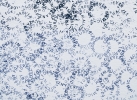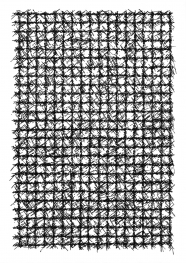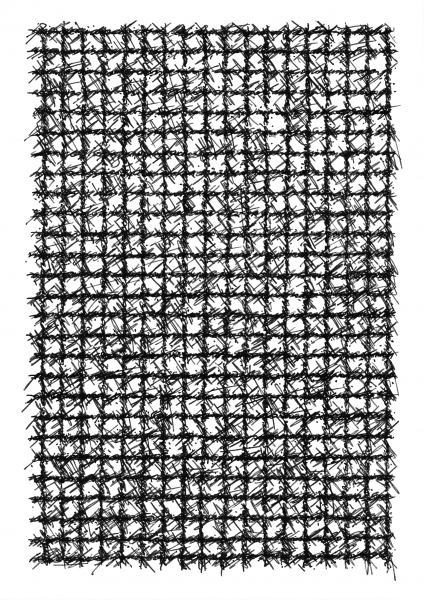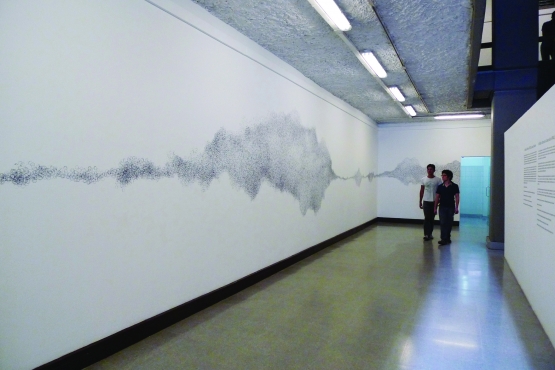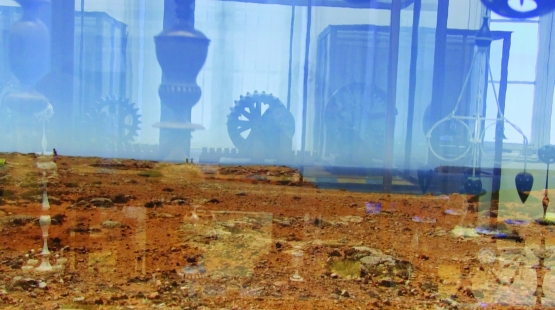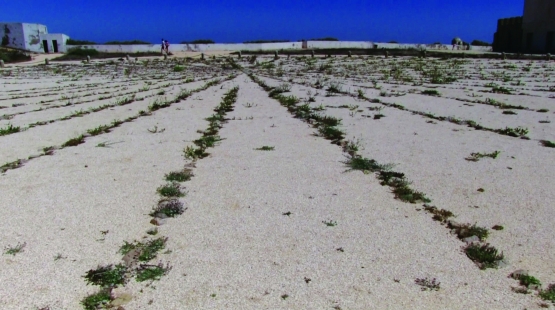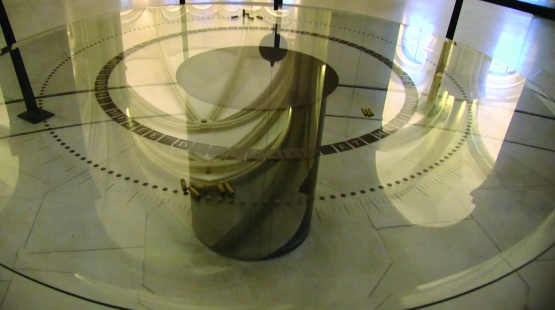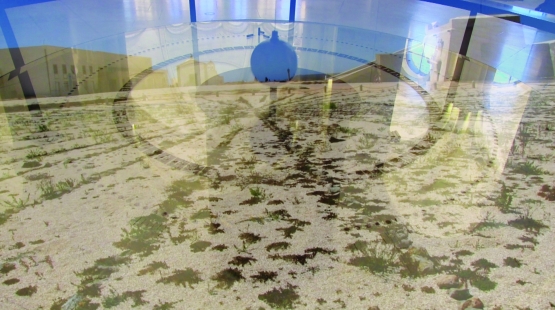“Outro dia“ [Another day] alludes to the concept of time: an open-ended period without set limits, but also time in the sense of repetition. The cyclical passage of days, moving between the past, present and future, trailing a desire for change and renewal along with it. The concept of space is implied, denoting a space in transit – the sphere of the “other” in the anthropological sense of the construction of identity.
“The Infinite House (House number)”, the first piece in this exhibition, shows the number 8 attached to the door of the museum, rotated 90° so that it forms an infinity symbol. As such, it acts a way of appropriating the space. The number 8 is the number on the door of the house where Marco Godinho lives in Luxembourg. By bringing a copy of this number with him, the artist “creates the fantasy of a founded and incessantly refounding place” (Marc Augé, Não-lugares, Lisbon, 2007, p. 42). When turned so that it is horizontal, the number 8 assumes the form of the infinity symbol, a line that describes continuous movement and represents the connection between the physical and the spiritual. In the same way, 8 denotes the eighth day, the start of a new week, while the “octave” refers to the boundaries of the musical scale, with the inherent notion of a new beginning. Marco Godinho extends his concept of “home/studio” to the museum space, creating a symbolic connection between the private and the public domain, a moment of trust and sharing in the construction and enrichment of identity and the strengthening of the philosophical and poetic concept of the artist as a nomad. This subtle intervention of the artist in the outside of the museum is almost imperceptible to the viewer who comes upon it unawares.
But the nomad is also the emigrant. Within the museum, a wall given over to the “ECHOES ON THE WALL” series of exhibitions is emblazoned with the slogan “Forever Immigrant”, in a work that summons up a performative element in the way in which the wall is marked with these two words, imprinted with a circular stamp. The repetitive and unremitting act of stamping, which involves force and pressure, marks the wall with a rhythmic pulse – a beat that also evokes that of the oars of the old slave boats, now updated in the form of refugee boats filled with those forced to go into exile or migrate in order to survive. The longed-for mark of administrative approval for entering into another country gradually covers the white wall, tracing out the shape of a cloud, itself symbolising continuous movement and the fleeting passage of these waves of migrants who sometimes vanish into the sea, but also a symbol of dreams and utopias, and the struggle for human rights.
On a plinth close to the wall is “Declaração Universal” (“Universal Declaration”), a work on paper. Marco Godinho based this piece on the Universal Declaration of Human Rights, using versions of the original text adapted into the languages of different countries. The text of the country chosen by the artist is literally copied onto a sheet of paper, handwritten in permanent ink, reverting to a method used in the 19th century during the early days of the postal system. Back then, in order to save on postage and paper, it was common to write in the customary horizontal lines, and then rotate the piece of paper and use the same sheet to write over the existing lines. Marco Godinho employs this method of rotating the paper 90° a number of times, writing his message in criss-crossing lines that run vertical and horizontal. This results in a geometric grid of squares where the text becomes illegible and the look of the whole suggests a barbed wire fence “imprisoning” the so-called fundamental rights.
For this exhibition Marco Godinho chose the Italian version of the text, thus setting out a relationship between Italy and Portugal, countries that are heavily associated with waves of migration, both from a historical perspective and in the present day. In recent times Italy, in particular, has been one of the main target destinations for illegal immigrants, and the stage for a drama of global proportions in which the constant violation of human rights has been especially egregious. When considered in tandem, this piece and the previous one, although separate, acquire the potency
